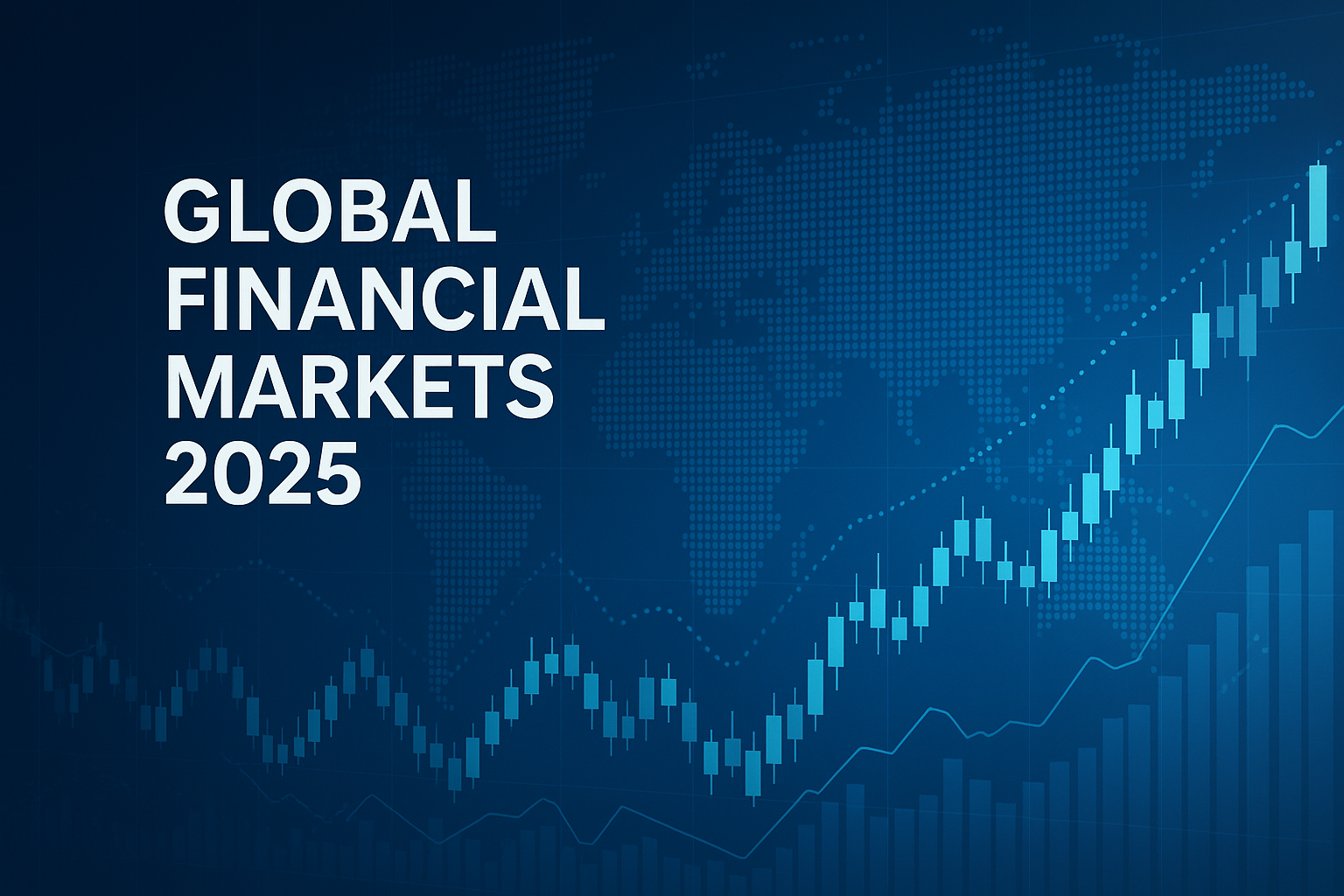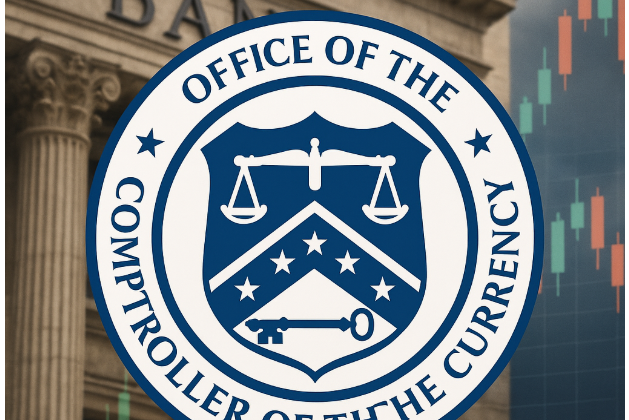
As we move through 2025, global financial markets are navigating a complex mix of moderating growth, gradually easing inflation and lingering policy uncertainty. For active traders and long-term investors alike, understanding these cross-currents is essential for managing risk and spotting opportunity.
This FxCapPro market commentary highlights the major macro trends and what they may mean for forex, equities, bonds, commodities and digital assets.
1. Macro backdrop: slower but resilient global growth
Multilateral institutions expect the world economy to grow, but at a pace below the long-term average:
- The IMF projects global growth of about 3.3% in both 2025 and 2026, versus an average of 3.7% between 2000 and 2019.
- Other forecasts point to growth around 3.0% in 2025, slightly lower than 2024, with performance varying widely by region.
At the same time, global inflation is expected to keep declining:
- One recent outlook sees global CPI inflation easing toward ~3.3% in 2025 and 3% in 2026, down from over 5% in 2024.
What this means for markets
- Growth is slower, not collapsing – a typical “late-cycle” environment.
- Inflation has cooled, but in many economies it has not fully returned to target, keeping central banks cautious.
- Geopolitics and new trade barriers remain a source of macro and market volatility.
For traders, this points to range-bound but volatile trends in many assets, with macro data and policy headlines often driving short-term price swings.
2. Interest rates: from aggressive hikes to cautious easing
After one of the most rapid tightening cycles in decades, markets are now focused on the timing and pace of rate cuts:
- Several forecasts anticipate the U.S. Federal Reserve could cut rates gradually in 2025, while the euro area and China may ease more quickly as growth worries intensify.
- Policymakers, however, remain sensitive to financial-stability risks; recent Fed commentary has warned that cutting too aggressively could fuel excessive risk-taking and keep inflation elevated.
Elsewhere, divergence is clear:
- In Japan, long-term government bond yields have climbed to their highest levels since 2008 amid concerns about rising public spending and heavy new issuance.
Trading implications
- Rate-cut expectations are a key driver of currencies, equity valuations and bond yields.
- Markets may be over-optimistic: sentiment surveys show equity allocations are high and cash low, a combination that has historically preceded corrections if central banks disappoint.
- Short-term interest-rate futures, bond markets and central-bank speeches will likely remain crucial indicators for direction and volatility.
3. Forex market outlook: policy divergence and volatility clusters
FX markets in 2025 are shaped by three overlapping forces:
- Policy divergence
- Currencies of economies cutting rates faster may face depreciation pressure.
- Currencies backed by more hawkish central banks can benefit from yield support, although that advantage can be offset by growth fears.
- Safe-haven flows
- In periods of risk-off sentiment, the U.S. dollar and select safe-haven currencies often strengthen, even if their home central banks are also easing.
- Carry and volatility
- As rate differentials stabilize or narrow, traditional carry trades may become less attractive unless volatility remains contained.
For traders, this environment favors:
- Focusing on rate-differential pairs (e.g., crosses where monetary paths diverge the most).
- Watching data surprises and central-bank rhetoric, which can trigger sharp short-term moves.
- Using clear risk parameters (stop-losses, position sizing) to manage event-driven FX swings.
4. Equity markets: earnings resilience vs valuation risk
Global equities enter 2025 with:
- More moderate inflation and the prospect of gradual rate cuts — supportive for valuations.
- Softening growth expectations, which could cap earnings expansion in cyclical sectors.
- Sentiment that is optimistic but potentially stretched: fund managers’ cash balances are low and equity exposure is high.
Sector dynamics to watch
- Technology & AI: still a structural growth story, but more sensitive to earnings disappointment and rate expectations.
- Healthcare and staples: beneficiaries when investors rotate toward quality and defensiveness.
- Financials and cyclicals: leveraged to the economic cycle and steepness of the yield curve.
From a trading perspective, 2025 may reward:
- Relative-value strategies (sector and factor rotation) more than broad index calls.
- Close monitoring of earnings seasons and forward guidance, especially in regions facing weaker growth or political uncertainty.
5. Bonds: higher yields reshape portfolio construction
Years of ultra-low yields have given way to a more “normal” rate environment:
- Long-term yields have risen more than short-term rates in many economies, reflecting both fiscal concerns and expectations of persistent inflation risk.
Key takeaways for fixed income:
- Income is back: government and high-grade corporate bonds now offer yields that can play a meaningful role in total return.
- Duration exposure is a double-edged sword:
- It can benefit from slower growth and rate cuts.
- It can be hurt if inflation proves sticky or deficits keep upward pressure on long-term yields.
Traders may find opportunities in:
- Curve-steepening or flattening trades based on policy expectations.
- Credit-spread trades, differentiating between stronger and weaker issuers as growth slows.
6. Commodities and gold: geopolitics and hedging demand
Commodities remain influenced by:
- Ongoing geopolitical tensions, which can affect energy supply routes and price volatility.
- The energy transition, altering long-term demand for fossil fuels and boosting interest in certain metals.
- Changing inflation expectations – when investors fear renewed price pressures, gold and, to a lesser extent, industrial commodities may attract hedging flows.
In 2025:
- Energy markets may see shorter, sharper swings around supply news and policy decisions.
- Precious metals can benefit from rate-cut expectations and macro uncertainty, especially if real yields stabilize or fall.
7. Digital assets: maturing but still high-beta
Digital assets remain a high-beta expression of global liquidity and risk appetite:
- Periods of optimism around rate cuts, innovation and institutional adoption can drive rallies.
- Regulatory actions, security incidents or sudden shifts in risk sentiment can lead to equally forceful drawdowns.
For traders, crypto markets require:
- Tighter risk controls than traditional assets.
- Awareness that price action can decouple from fundamentals in the short term.
- Consideration of liquidity conditions and exchange-specific risks.
8. Key themes for traders to watch in 2025
From FxCapPro’s perspective, several themes are particularly important this year:
- The pace and credibility of rate cuts
- Markets are priced for easing; any hesitation from central banks could trigger repricing across FX, bonds and equities.
- Regional divergence
- Growth, inflation and policy paths differ across the U.S., Europe, Asia and emerging markets, creating relative-value opportunities.
- Geopolitical and election risk
- Trade policy, fiscal choices and regional conflicts can move markets abruptly, especially in currencies, commodities and defense-related sectors.
- Liquidity conditions
- As central banks shrink balance sheets or adjust policy, the availability and cost of liquidity will matter for risk assets and funding markets.
- Investor positioning and sentiment
- With surveys showing strong risk appetite and low cash levels, crowded trades are vulnerable if macro data or policy disappoint.
9. FxCapPro’s approach to market analysis
FxCapPro Limited, a Colorado-incorporated company, focuses on building data-driven, globally oriented insights for market participants.
In our view, navigating 2025 successfully requires:
- Multi-asset thinking – monitoring how FX, rates, equities, commodities and digital assets interact rather than treating them in isolation.
- Scenario analysis – stress-testing portfolios against alternative paths for growth, inflation and policy.
- Risk management discipline – using position sizing, diversification and predefined exit levels to manage downside risk.
We see value in combining macro fundamentals, market positioning data and technical analysis to build a more complete picture of potential opportunities and risks.
10. Final thoughts and risk reminder
The 2025 global financial landscape is neither purely bullish nor outright bearish. Instead, it is characterized by:
- Moderating but positive growth.
- Gradually easing but still uneven inflation.
- Central banks shifting from aggressive hikes to cautious easing.
- Elevated policy, fiscal and geopolitical uncertainty.
For traders and investors, this environment favors flexibility, selectivity and robust risk management over simple one-way bets.





